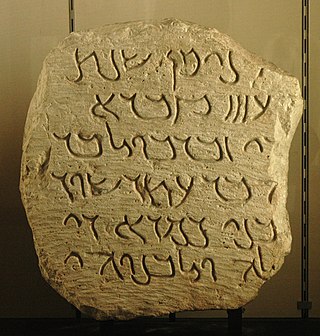Top Qs
Timeline
Chat
Perspective
Palmyrene Aramaic
Western Aramaic dialect spoken in the city of Palmyra in the early centuries AD From Wikipedia, the free encyclopedia
Remove ads
Palmyrene Aramaic was a Middle Aramaic dialect, exhibiting both Eastern and Western Aramaic grammatical features, and is therefore often regarded as a dialect continuum between the two branches.[a] It was primarily documented in Palmyra itself, but also found in the western parts of the Roman Empire, extending as far as Britannia. Dated inscriptions range from 44 BCE to 274 CE, with over 4,000 known inscriptions, mostly comprising honorific, dedicatory, and funerary texts. The dialect still retains echoes of earlier Imperial Aramaic. The lexicon bears influences from both Koine Greek and, to some extent, Arabic.[7][8][9]
The dual had disappeared from it.[7]
The written Palmyrene language was composed in a rounded script that later exhibited resemblances to the Syriac Estrangela script.[10]
Remove ads
See also
References
Notes
Further reading
Wikiwand - on
Seamless Wikipedia browsing. On steroids.
Remove ads

